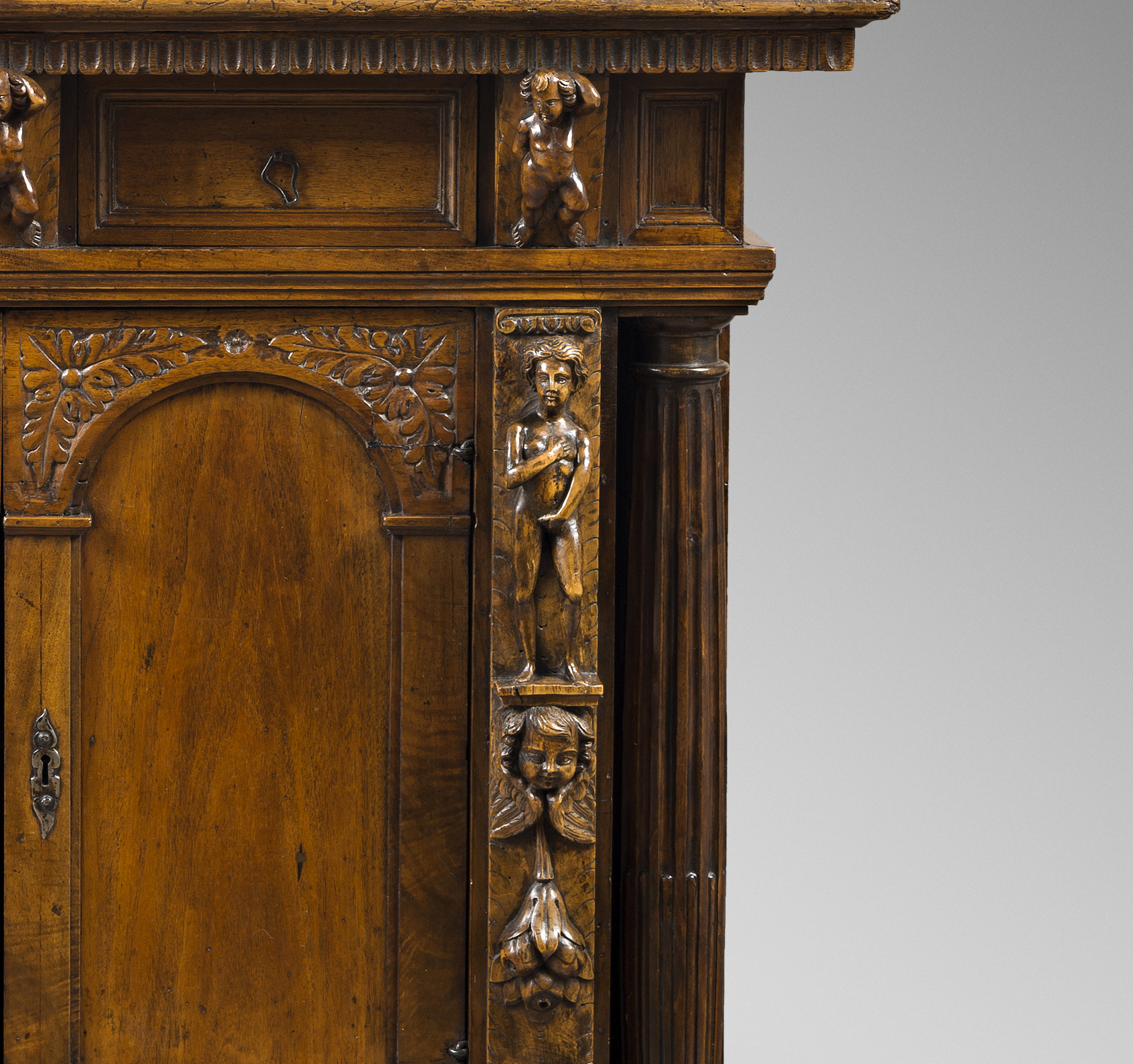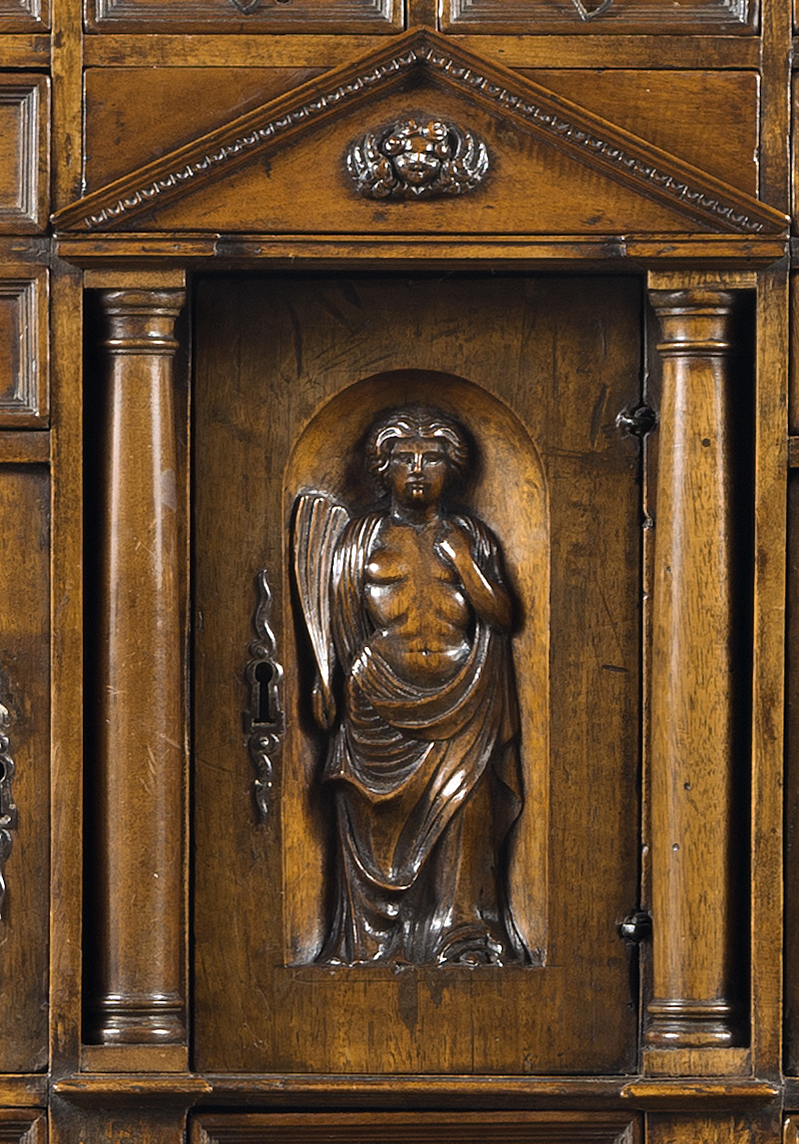Description
This stipo, little Italian cabinet made of walnut and walnut burl, is a remarkable example of Mannerism applied to decorative arts during the late 16th century.
While the Mannerist movement was born and developed in Florence before becoming international, it is in Northern Italy that Mannerism fully bloomed during the late 16th and early 17th century.
Contrary to the rest of Italy where classical motifs are adopted very early on, Renaissance decorative elements persist very late all through the 17th century in the Northern regions.
It is in Liguria that this fashion appears the most clearly on furniture and especially in Genoa where appears a whole category of cabinets with richly carved decor of exuberant figures called bambocci. This specifically Genoan type of furniture draws inspiration from Tuscan Mannerism.
This Genoan cabinet is made of two superimposed bodies. The frame is ornated with small figures and fruit and flower garlands executed with virtuosity in a block of walnut wood then applied on each jamb. Inspired by bambocci those figures celebrate life and the deities of nature.
The lower body stands on a moulded base supported by beautiful overlapping lion paws. It opens with two door-leaves. The finely moulded arches’ spandrels are garnished with foliage. On each side are carved small naked female figures covering themselves with their hands in an harmonious pose. They stand on angel heads and flower bouquets. In the angles rise two thin grooved columns.
The belt comprises two drawers flanked by atlant putti carved on top of modillions.
The upper body is framed by two admirable grooved columns identical to those on the lower body. The jambs are adorned with sheathed caryatids standing on angel heads and foliated scrolls.
In the centre is an admirable architectonic decor revealing an Antique portico with a triangular pediment. A draped woman holds in her hand a palm leaf. On both sides are located foor drawers as well as a door-leaf where a naked woman takes place in a niche.
The entablature is divided by three atlant putti topping the cabinet. The cabinet is finished by a dentil frieze.
On the lateral panels of the lower body moulded frames animate the surface while on the upper body they are adorned with an arcature, foliages granishing the spandrels. As on the facade the cornice is supported by putti.
Bibliography
Silvano Colombo, L’arte del mobile in Italia, Bramante Editrice, 1981
Augusto Pedrini, Il Mobilio gli ambienti e le Decorazioni del Rinascimento in Italia, Stringa Editore, 1969






